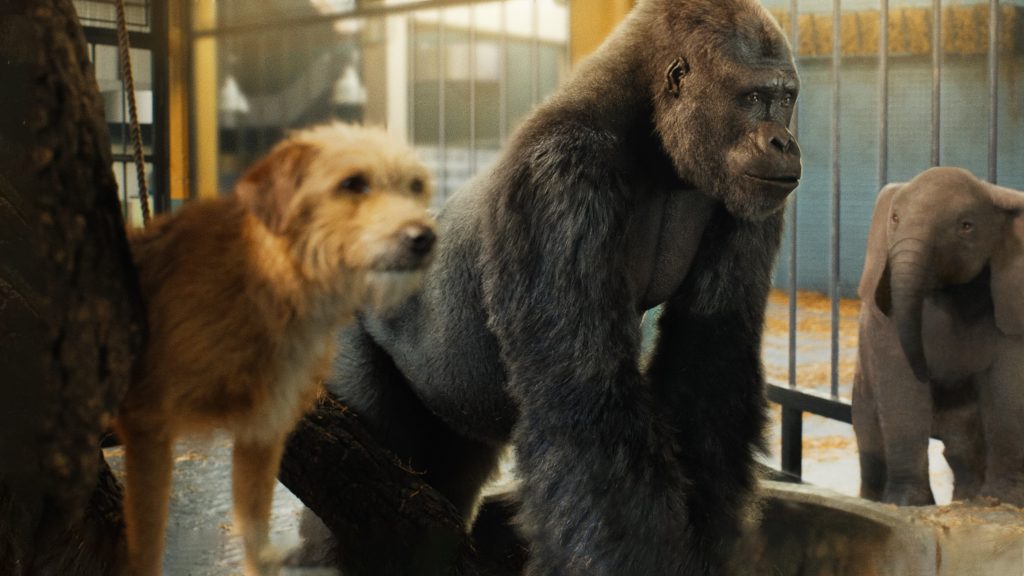The journey from page to screen can be perilous, especially when the source material is a book as wedded to the literary form as Katherine Applegate’s The One and Only Ivan. I read the book aloud to my two kids recently, and I enjoyed it quite a bit. The book has a discursive and diaristic style, a great entry point to subjective narrators and nonlinear timelines for elementary schoolers. It received the annual Newbery Award as tribute. It works on the page, but there is a monumental challenge to translate such literary devices to the screen. That didn’t deter Disney.
The film was cursed with an unfortunate release window: it is one of their major projects shifted from theatrical release to streaming release due to COVID (and since erased from streaming for reasons only accountants understand).

I have a lot of issues with the adaptation, but I want to start with the film’s biggest achievement. The computer-animated animals in the film are a genuine triumph. In an age where the uncanny, plastic-like texture of bad animal CGI can shatter immersion, The One and Only Ivan is a stellar exception. These animals are astonishingly lifelike to the point that I couldn’t always tell what was CG and what was practical.
The impressiveness of the CGI actually backfires on the film to some extent: the realism of the animals becomes off-putting as animal faces mouth human words and give human expressions. Considering the film often uses reaction shots and close-ups of the animal characters the way another film would humans, the uncanny valley is a serious issue for The One and Only Ivan.
The book and film chronicles Ivan’s gradual journey to freedom despite being a caged gorilla at a cheap mall zoo. The film struggles to make the interior monologue-heavy arc of the book into something more cinematic, though it introduces a bunch of ideas and plot threads to try. For instance, the movie introduces a clumsily executed escape mission that feels totally out of place.

Much of the film’s emotional appeal comes on the back of the human performance of Bryan Cranston as Mack, the time animal show owner. In the book, Mack is a nuanced character, more villain than hero but often quite sympathetic. The film smooths his character out into a more generous depiction, which kind of undercuts the entire theme of the whole the story: If we’re rooting for the captor, why are we even here? But Cranston brings sufficient gravitas and complexity to Mack to make the role work.
Beyond Cranston, there’s some other intriguing human talent involved. Danny DeVito voices the sidekick dog Bob. You know I love it when Danny DeVito voices a sidekick. Behind the camera, the talented Mike White pens the adaptation. It’s not his best work by a long shot, though he sneaks in some fun lines and bits of setup and payoff.

The film’s visual production is much better than your typical streaming fare as a result of its theatrical release budget, but other parts of the production really struggle. The worst part of the movie is its score. Craig Armstrong’s sentimental drone is poorly mixed and arduously repetitive. It has a cloying, non-stop inspirational tone that overwhelms the film’s tone, leaving no room for quiet in a story that could have really benefited from a few pensive moments.
The ending is nice enough; I got a little misty-eyed at Ivan’s happy-ish ending. But it’s basic inspiring movie fodder. I can’t imagine anyone older than the age of 12 getting stirred by the film. Even though it reasonably attractive and watchable, it never gets to the point of making me care beyond the fact that I liked the book. So feel free to skip it, which is easier than ever to do now that it’s off Disney+.
Is It Good?
Not Very Good (3/8)
Follow Dan on Letterboxd or Twitter. Join the Discord for updates and discussion.

